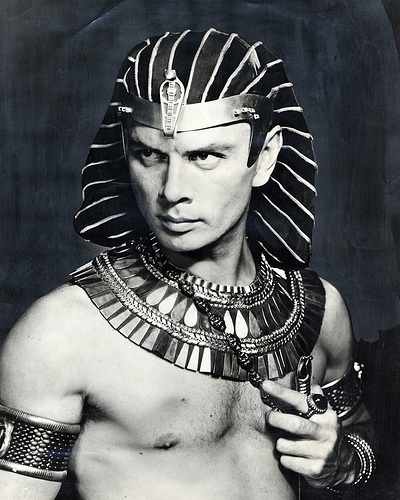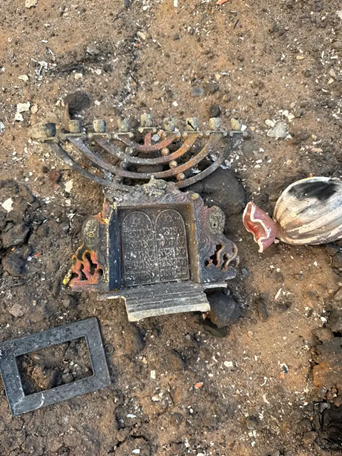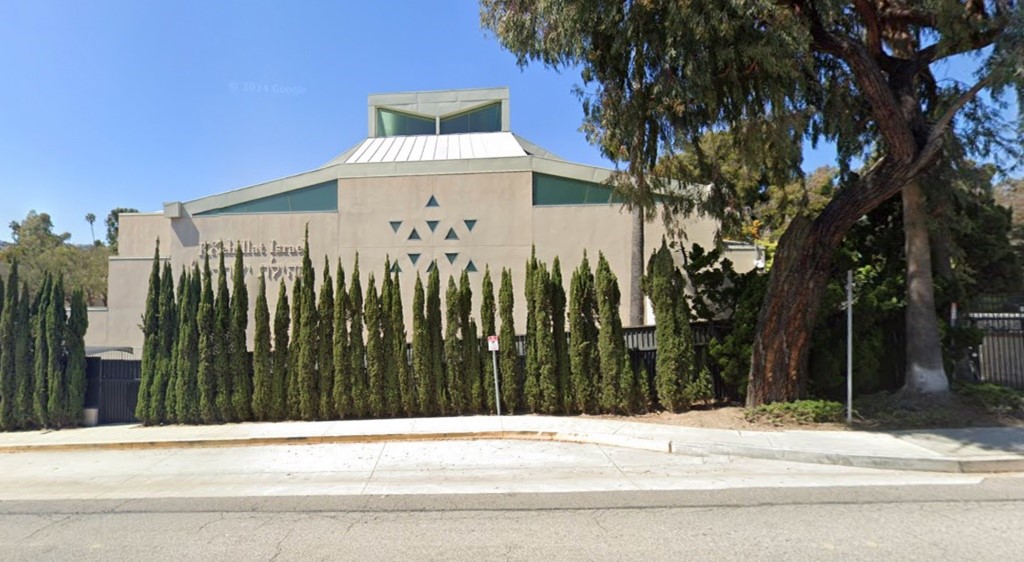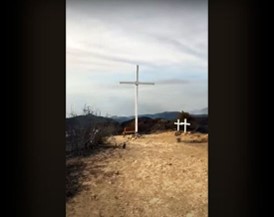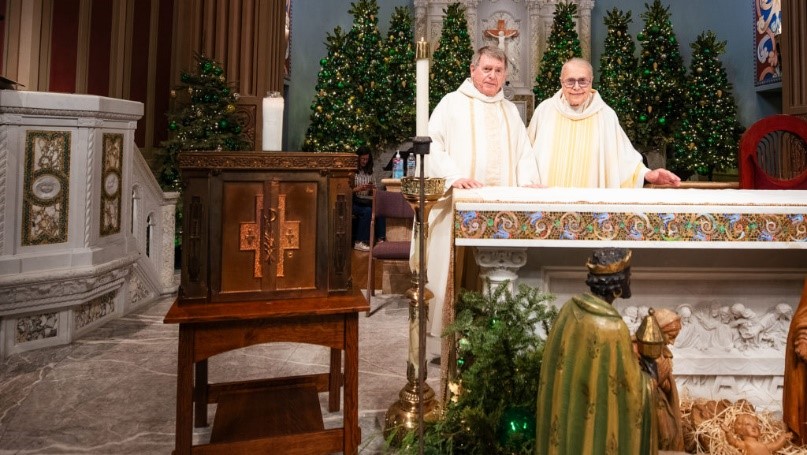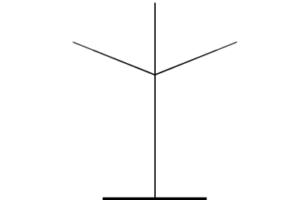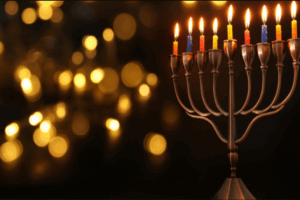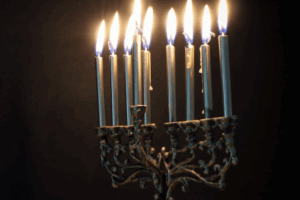Please read the update at the end of this blog about the tragic deaths of Ariel and Kfir Bibas.
Have you experienced a deep loss? How did it make you feel about God?
At a recent shabbat service, we were studying about Joseph’s dream reading (Genesis 41:25-30), when a young boy asked “If Joseph dreamed the future, how can humans have free will? Is everything that we do already pre-determined by God?
I was really struck by the young boy’s question. I remember when I asked the same question for the first time. I was 15 years old, living in Japan as an exchange student when I experienced true loss for the first time.
In 1984, I won a scholarship sponsored by the Mazda Motor Corporation to live in Japan as an exchange student. Our trip orientation took place at Mazda’s Hiroshima headquarters, during which we went to the Hiroshima Atomic Bomb Park for a peace ceremony and met with Atomic Bomb survivors. Their stories of loss, survival, and hope were paradoxically both devastating and inspiring. I still carry those feelings and conversations with me today.
That evening when I was back in the company dorm, my feeling of devasting loss went from historical to deeply personal. I was notified by the dorm monitor that I had a phone call from the US. My heart raced and my breath shortened. I anxiously picked up the phone to hear my mom’s voice cry and crackle. “Normy has died”. I burst into tears and walked alone for over three hours in circles in the parking lot. Normy was my grandfather and the most inspiring and positive voice in my life. He was my relentless cheerleader and epitomized the saying he taught me “Don’t let anyone rain on your parade”. Later each of my brothers and I named our eldest children with his name after his memory.
I tried to process the losses of the Atomic bomb survivors I learned about with the personal loss of my grandfather. My sadness lasted and my wounds slowly healed. However, I still struggled with my faith in God. When I returned to the US, I found the book by Rabbi Harold Kushner “When Bad things happen to Good People?” I was truly struck by the sadness of Rabbi Harold Kushner discussing how his son tragically died prematurely from a terrible illness.
When he explored his own faith and understanding of biblical texts, he resolved the paradox of “How bad things can happen to good people?” with a re-interpretation of God being “all-powerful” to God being “all-compassionate.” Rabbi Kushner posited that it is the compassion of God in difficult circumstances that allows humans to experience the frailty and fallibility of free will. With the compassion and care, God helps to support and heal the physical wounds and spiritual scars of these choices. This book salved my heart for a period of time.
When I was in college, I studied Consolation of Philosophy by Boethius. I was struck by how Boethius was asking the same question as Rabbi Kushner but came to a different allegorical answer.
Boethius, who was severely mistreated by the Roman court in 524 BCE was locked in prison wrongly and sentenced to execution. In his treatise, Lady Philosophy explained that humans operate in past, present, and future, linearly and sequentially. God operates in the “eternal now” across all times zones with mobility and awareness of everything at the same moment. Human fallible free will choices are made in the moment, while God knows all time periods, past, present, and future in the “eternal now” and sees all events at once. This book calmed my mind for a while.
When I look to the torah, I realized that God often presents humans with choices – even knowing that the desired outcome may not be followed. In Genesis 2:16 and 3, God instructs Adam and Eve not to eat from the Tree of Knowledge, even though he knows that they will disobey.
In Deuteronomy, 30:19, the Torah states “I have set before you life and death, blessings and curses. Now choose life…” There are many commandments which God intends for man to follow, nevertheless human free will fails freely.
In Numbers 20:7-12, God commanded Moses to “speak” to the rock to receive water, and instead Moses struck the rock twice with this staff. It is understood that God punishes Moses for his disobedience by not allowing Moses to enter the Promised Land.
Let us return to the young boy at the Shabbat service who explored the dreams of Joseph. The story of Joseph and his brothers in Genesis shows how humans can make bad choices and then recover in their own way. The evil of the brothers towards Joseph is later replaced by the compassionate collective of their sibling ties who later became the 12 Tribes of Israel.
Another poignant paradox is eloquently written in Ecclesiastes 3 which describes the polar opposite choices in same seasons “a time to be born and a time to die, a time to love and a time for hate, a time for war, and a time for peace.” The juxtaposition of opposite choices in each of the same verses without judgment demonstrates the importance of human free will to choose even within the frame of divine teaching.
This pathway of the paradox can be explored in, Exodus 14:19 which states, “And the angel of God, who had been traveling in front of Israel’s army, withdrew and went behind them. The pillar of clouds also moved from in front and stood behind them”.
In this passage, the angel of God and the pillar of cloud move from “in front” of the Israelites to “behind them”. The children of Israel are now free to lead on their own, no longer being led. At the same time, God will remain behind them, like a protective parent to provide compassionate support at moments of distress. God can be both “near” and “far” and still be ever present in the midst of the human free will journey.
This concept of “near” and “far” and “in front” and “behind” can be explored within the inspiring words of Victor Frankl, a renowned Austrian philosopher whose wisdom was born out of his experience in the holocaust.
“We have absolutely no control over what happens to us in life but what we have paramount control over is how we respond to those events.”
― Viktor Frankl Meaning of God
The key addition to Viktor’s wise words is that the compassion and support of God/Hashem provides compassionate “near and far” “from behind” support to our human responses.
In conclusion, in Genesis 32:28, God commanded Jacob “From now on, your name will no longer be Jacob. You will be called Israel, because you have wrestled with God and with men, and you have won.”
The perpetually persistent paradox of human free will vs. an omnipotent god may be the essence that makes us the Children of Israel. Pursuing this paradoxical path with purpose and faith may be the prescient pathway to the Promised Land.
Appendix:
February 20, 2025, Today, I, and a “collective and compassionate we”, are experiencing a new low, a new loss, with the tragic news that Shiri Bibas and her two beautiful angelic red headed baby boys Ariel and Kfir were killed in Gaza under Hamas Captivity. Ariel and Kfir were 4 years and 9 months when they were brutally captured on October 7 from their bedrooms. This evil was proudly filmed by Hamas and sinisterly shown to the world. Ironically, only the depravity and cowardness of Hamas was revealed by displaying adults kidnapping and terrorizing two baby boys and their mother on October 7 in front of cheering crowds.
Although the Bibas boys were not our own, the collective and compassionate we, all felt as if they were our own sons or brothers.
Since October 7, we prayed. We hoped. We celebrated their birthdays. As Rabbi Harold Kushner wrote, God was with us to help us with our hope and to make our prayers even more powerful. We held our collective and compassionate breath….until today. The Pillars of Clouds were in front of us.
Today, the curtain has revealed the true depravity and evil of Hamas and all those around the world who support Hamas. Today thousands in Gaza revealed their evil as they celebrated during a cruel casket ceremony and cheered the casket delivery of the Bibas Boys’ bodies. There are no words for this depravity and evil.
(Each of the deaths of Oct 7 Israelis, Hostages and IDF soldiers and innocent civilians in the region is sacred. I am solely focusing on the Bibas Boys in this blog).
Today the world of the compassionate and collective we, mourns.
As the Children of Israel and all of Israel struggles with the brutal killing of the Bibas boys, God will protect us from behind as we struggle in the intrinsic nature of Israel.
May the memories of Ariel and Kfir and Shira Bibas be for a blessing. May we mourn all of the lives lost on October 7 and subsequent war. May we continue to pray for the remaining hostages. May we look forward to peace. Am yisrael chai.

